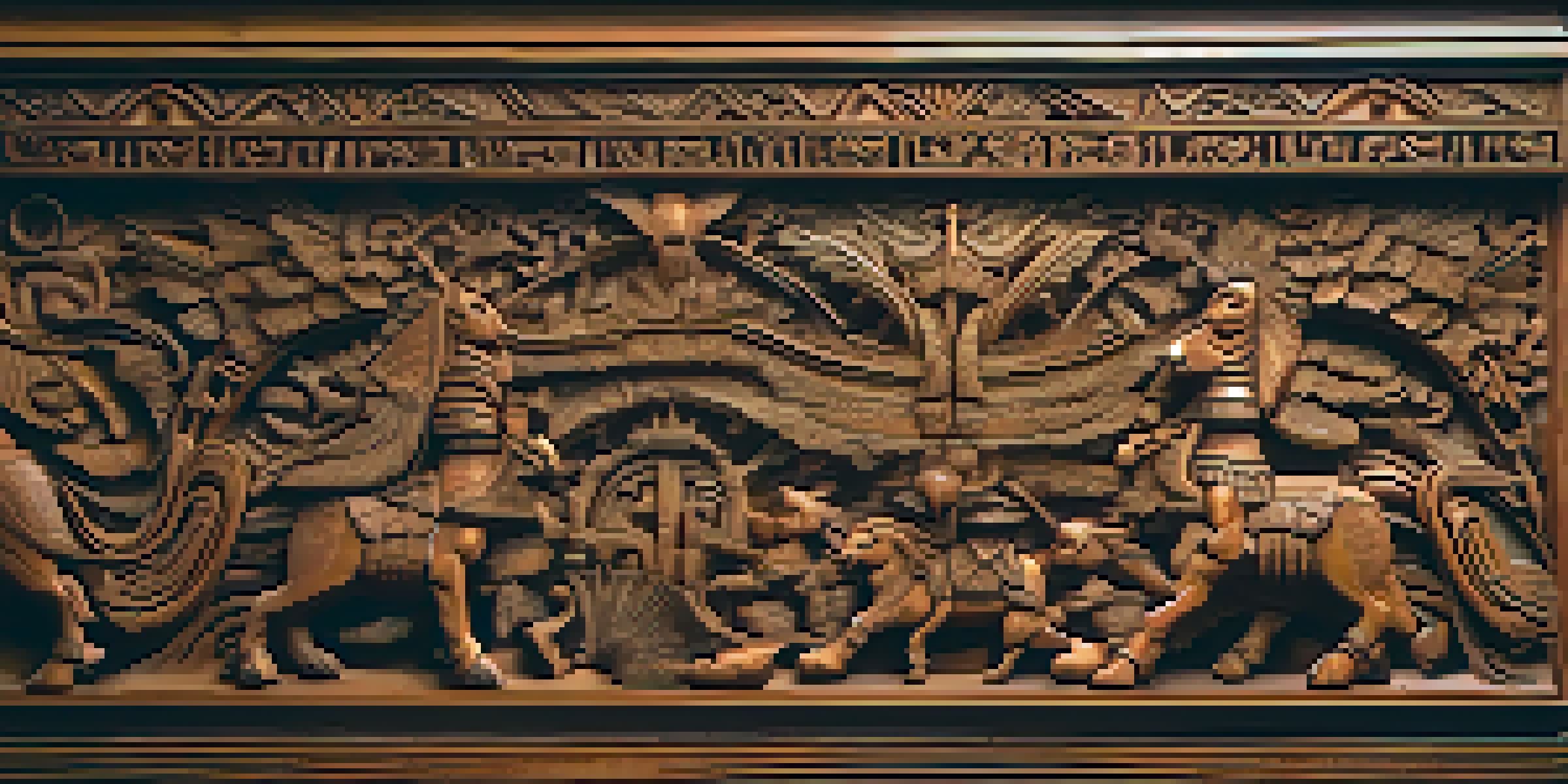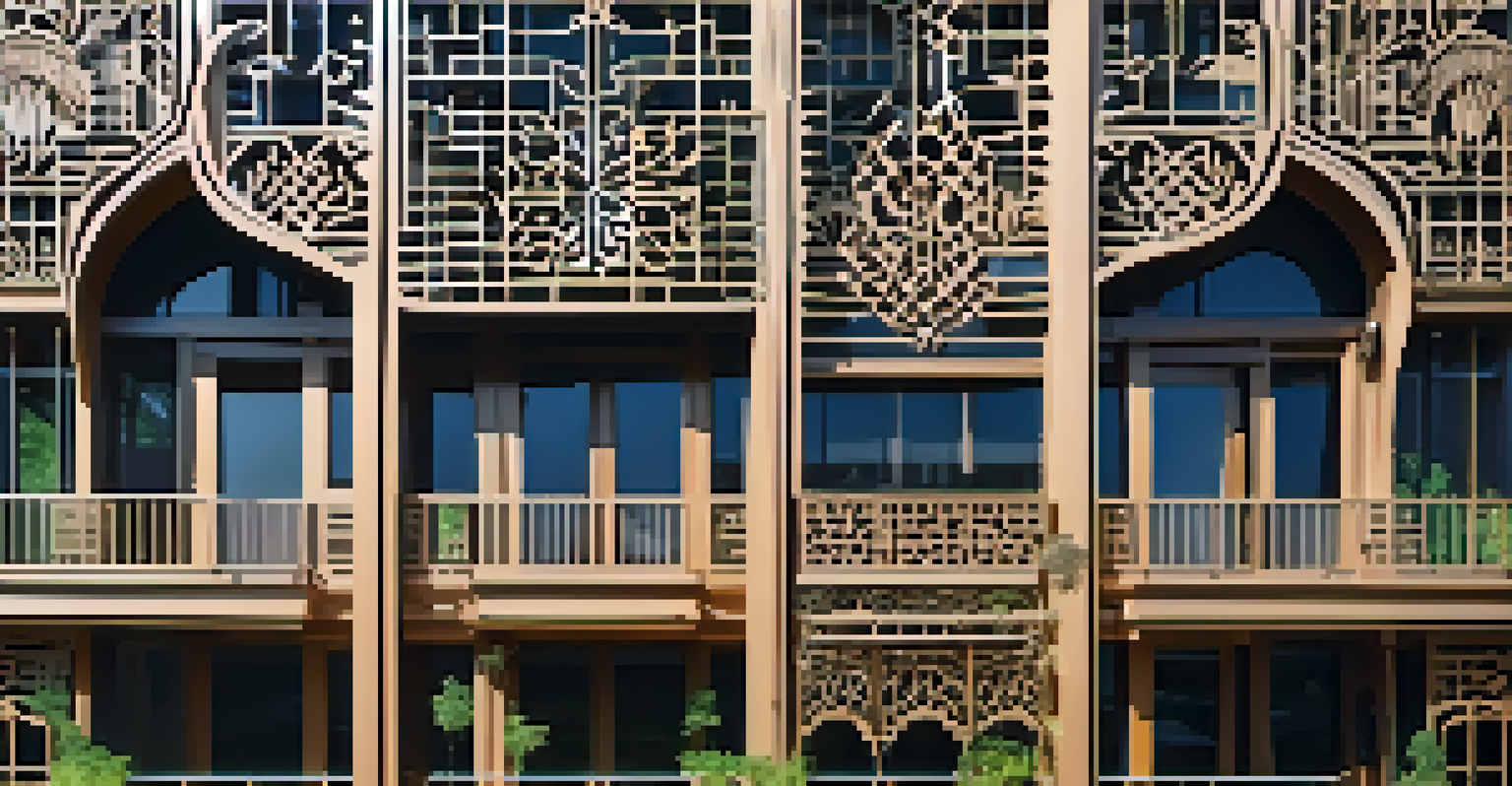Cultural Significance of Carvings in Architecture Worldwide

Introduction: The Art of Carving in Architecture
Carvings have been an integral part of architectural aesthetics across cultures for centuries. They serve not only as decoration but also as a storytelling medium, expressing cultural values and beliefs. From ancient temples to modern skyscrapers, these intricate designs reflect the identity of the communities that create them.
Architecture is the learned game, correct and magnificent, of forms assembled in the light.
Understanding the role of carvings in architecture allows us to appreciate the depth of human creativity and expression. Each carving tells a story, whether it's a mythological scene, a religious symbol, or a representation of daily life. These artworks connect us to the past, providing insights into the customs and traditions of various societies.
As we explore the significance of carvings, we'll uncover how they act as cultural signposts, guiding us through the rich tapestry of human history. In every corner of the globe, these carvings invite us to learn, reflect, and appreciate the diversity of human experience.
Historical Context: Carvings Through the Ages
The use of carvings in architecture dates back to ancient civilizations, where they were often employed to glorify deities or commemorate significant events. For instance, the intricate stone reliefs of the Assyrian palaces depicted royal hunts and battles, showcasing the might of the empire. Such carvings were not merely ornamental; they served to communicate power and divine sanction.

As we moved through history, the styles and techniques of carvings evolved, reflecting the cultural shifts of each era. During the Gothic period, for example, elaborate stone carvings adorned cathedrals, illustrating biblical stories and moral lessons to a largely illiterate population. This art form became a crucial method of education and communication.
Carvings: Cultural Storytellers
Carvings serve as vital cultural symbols, encapsulating the beliefs and traditions of communities across the globe.
Today, while the materials and tools have advanced, the purpose of carvings remains largely unchanged: they continue to convey the values and beliefs of the societies that produce them. This historical context enriches our understanding of why carvings are so significant in architectural design.
Cultural Symbolism: Carvings as Storytellers
Carvings often embody deep cultural symbolism, representing ideas, beliefs, and traditions that are unique to a specific community. For instance, in many Indigenous cultures, carvings feature animals that hold significant spiritual meanings, serving as totems or protective symbols. These designs help preserve the cultural heritage and stories of these communities.
Art is the most beautiful of all lies; it is the true expression of individual and cultural identity.
In Asia, carvings of dragons in Chinese architecture symbolize power and good fortune, illustrating how these motifs are intertwined with cultural identity. Such carvings not only beautify the spaces but also serve as reminders of cultural narratives that have been passed down through generations.
Through these examples, it becomes clear that carvings are more than decorative elements; they are vital components of cultural storytelling. They encapsulate the essence of a community, allowing future generations to connect with their heritage.
Regional Variations: Global Perspectives on Carvings
Around the world, the style and significance of architectural carvings vary greatly, influenced by local traditions, materials, and spiritual beliefs. In Africa, for instance, wooden carvings often depict ancestral spirits and are integral to rituals, highlighting the connection between the living and the spiritual world. These carvings serve both aesthetic and functional purposes within their cultural context.
In contrast, the intricate stone carvings found in Indian temples often illustrate scenes from religious texts, showcasing the region's rich spiritual heritage. The attention to detail and craftsmanship in these carvings reflect the devotion and artistic skills of the artisans.
Historical Significance of Carvings
The evolution of carvings in architecture reflects historical changes, showcasing the values and narratives of different eras.
These regional variations remind us that while carvings may serve similar purposes globally, their expressions are deeply rooted in local culture, making them unique yet universally significant.
Modern Relevance: Carvings in Contemporary Architecture
In today's architectural landscape, carvings continue to play a crucial role, blending tradition with modern design. Contemporary architects often incorporate traditional motifs into their projects, creating a dialogue between the past and the present. This fusion helps maintain cultural relevance in an increasingly globalized world.
For example, many modern buildings feature laser-cut materials that echo traditional carving techniques, showcasing a commitment to preserving cultural identity while embracing innovation. This approach not only honors the history of carvings but also makes them accessible to a broader audience.
As we look at these modern interpretations, it’s clear that the cultural significance of carvings remains strong, evolving with society while still paying homage to its roots.
Preservation Efforts: Protecting Cultural Carvings
The preservation of carvings in architecture is essential for maintaining cultural heritage. Many organizations work tirelessly to protect these artworks from environmental degradation, urbanization, and neglect. This effort is crucial as it allows future generations to experience and learn from these cultural treasures.
For instance, UNESCO has designated several sites around the world that feature significant carvings as World Heritage Sites, ensuring their protection and conservation. These initiatives highlight the importance of recognizing and valuing the historical and cultural narratives embedded in these artworks.
Modern Relevance of Carvings
Contemporary architecture continues to embrace carvings, blending traditional motifs with modern design to maintain cultural identity.
By investing in preservation efforts, we can ensure that these carvings continue to inspire and educate, fostering a greater understanding of our shared human history.
Conclusion: The Enduring Legacy of Carvings
In conclusion, the cultural significance of carvings in architecture cannot be overstated. They serve as a bridge between past and present, offering insights into the values, beliefs, and identities of diverse cultures. The stories told through these intricate designs enrich our understanding of human experience and creativity.
As we continue to explore and appreciate these artworks, we recognize their role in fostering cultural pride and continuity. Whether through ancient stone carvings or modern interpretations, the legacy of these artistic expressions remains vital.

Ultimately, carvings in architecture invite us to reflect on our own cultural narratives and to celebrate the diversity that makes our world vibrant and unique.